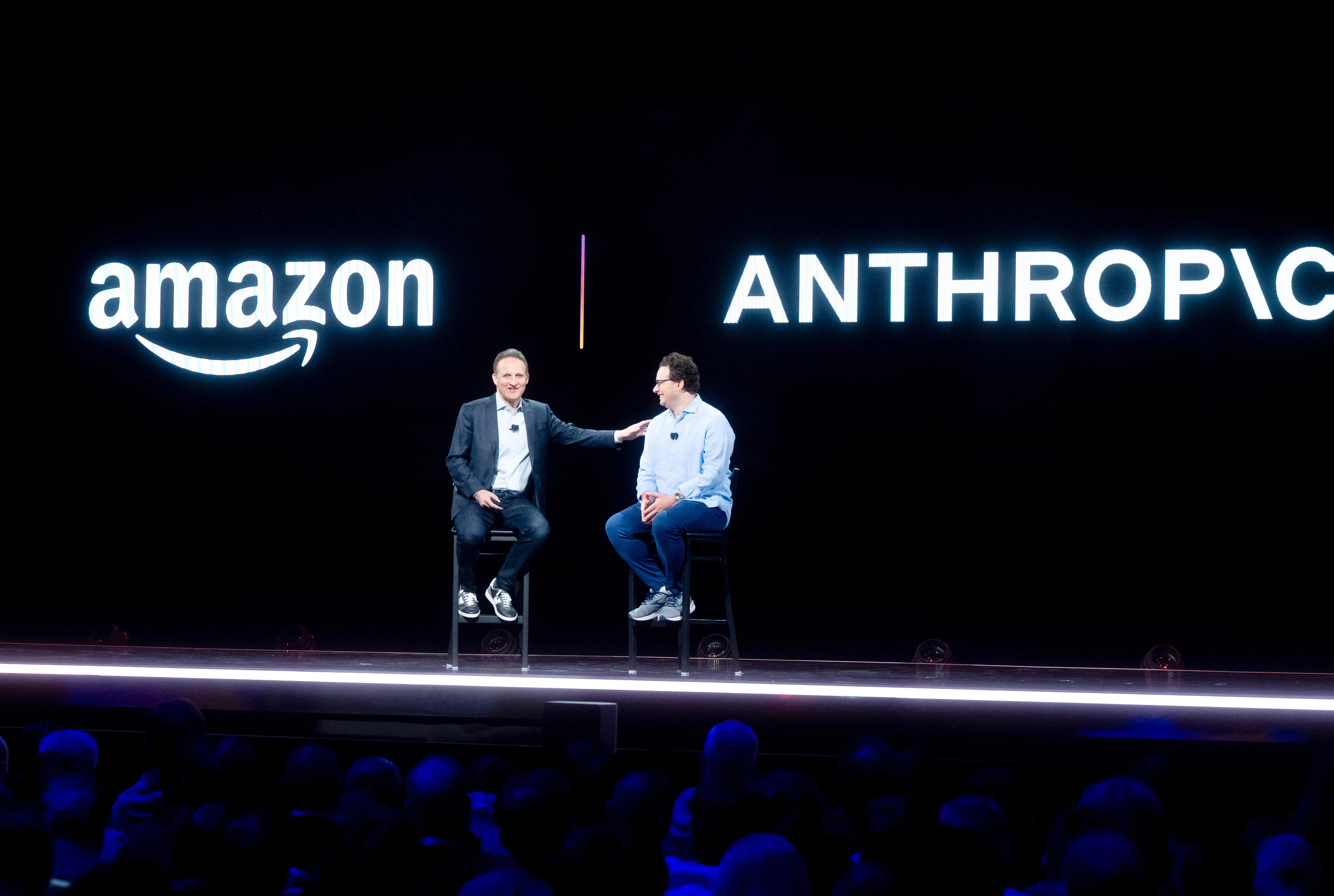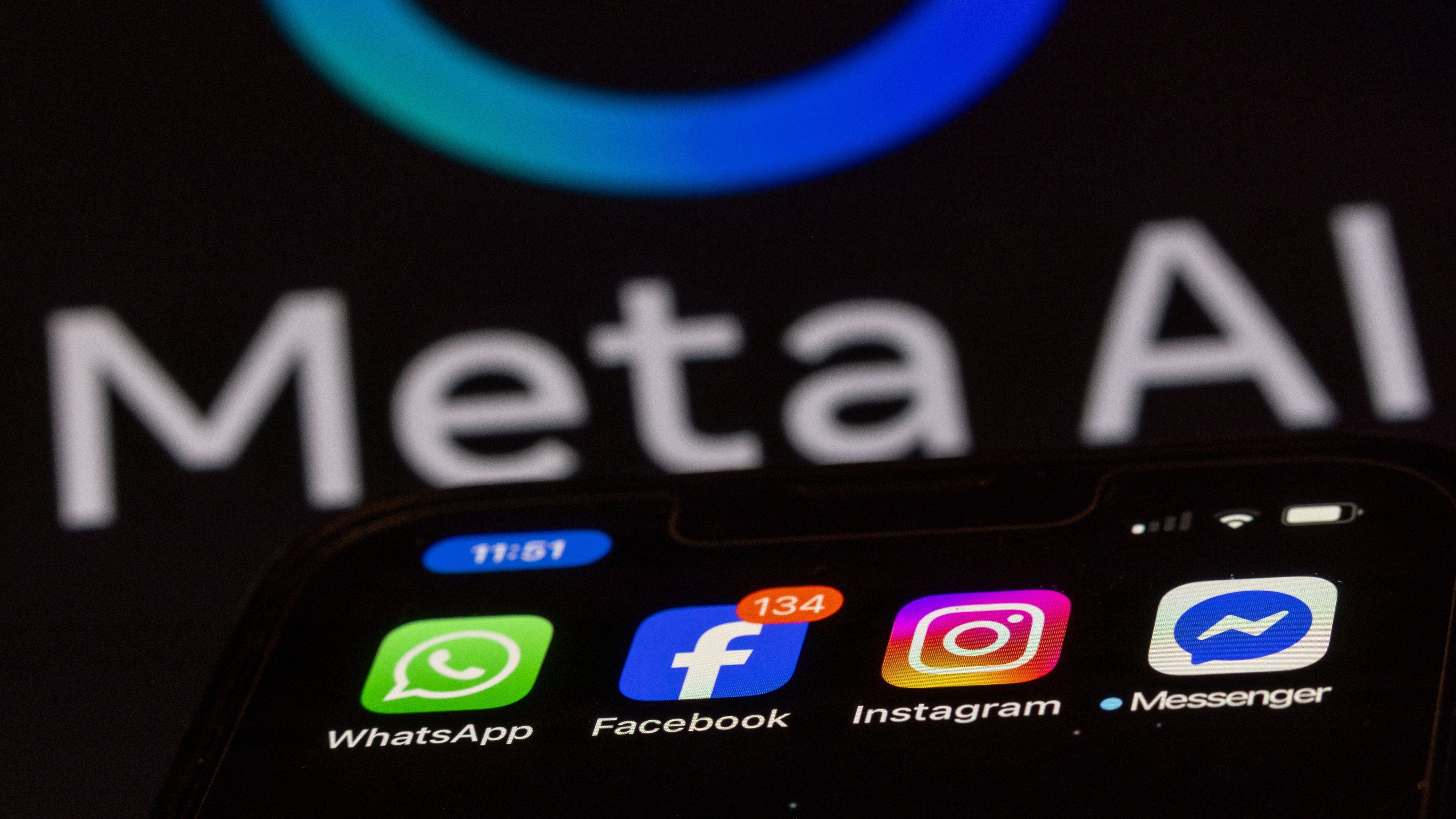Markets kick off June mixed, eyeing trade whispers and key economic data. Tech resilient, but volatility looms as central banks and inflation take center stage.

Anthropic’s rapid AI growth: Discover how the AI safety leader achieved a $3 billion annualized revenue, driven by enterprise demand for its Claude models and a safety-first approach.

In the hyper-competitive arena of artificial intelligence, Anthropic PBC has emerged not just as a significant player, but as a phenomenon. The AI safety and research company, founded just four years ago in 2021, is now reportedly making about $3 billion in annualized revenue as of May 2025. This staggering figure, a dramatic leap from nearly $1 billion in December 2024 and $2 billion around the end of March 2025, underscores an explosive growth trajectory fueled by burgeoning enterprise demand for sophisticated AI solutions. Anthropic’s ascent is a compelling narrative of a safety-first approach translating into monumental commercial success, challenging established norms and setting new benchmarks in the tech world.
Anthropic was established in 2021 by a group of former senior members of OpenAI, including siblings Dario Amodei (now CEO) and Daniela Amodei (now President). The founding team, which also included other prominent researchers like Chris Olah and Jack Clark, departed OpenAI reportedly due to differences in vision concerning the rapid commercialization and safety of artificial general intelligence (AGI). Their core mission for Anthropic was, and remains, to build reliable, interpretable, and steerable AI systems, ensuring that transformative AI technology benefits people and society while mitigating potential risks.
This commitment to AI safety is not merely a talking point; it’s embedded in the company’s structure as a Public Benefit Corporation (PBC). This legal status allows the board to prioritize its mission of safe AI development alongside shareholder profit, a distinction from many purely profit-driven tech entities. This foundational philosophy has guided the development of their flagship AI models and has resonated deeply with a market increasingly aware of AI’s potential pitfalls.
At the heart of Anthropic’s success is its family of large language models (LLMs) collectively known as Claude. Named in homage to Claude Shannon, a pioneer of information theory, the Claude models have seen rapid iteration and improvement since their inception.
The journey began with initial versions like Claude 1, which laid the groundwork. Subsequent releases, including Claude 2 and Claude 2.1, significantly enhanced capabilities, particularly in handling longer contexts—Claude 2.1 boasted a 200,000 token context window, equivalent to roughly 500 pages of text. This allowed for more complex reasoning, summarization, and interaction.
The release of the Claude 3 family in March 2024 marked a significant leap, with models—Haiku (fastest), Sonnet (balanced), and Opus (most powerful)—that Anthropic claimed set new industry benchmarks across various cognitive tasks. Claude 3 Opus, in particular, demonstrated advanced reasoning and near-human levels of comprehension and creation. These models also introduced multimodal capabilities, allowing them to process and analyze images alongside text.
Further refinements led to Claude 3.5 Sonnet, and more recently, reports indicate the development and release of Claude 3.7 Sonnet and even the next-generation Claude 4 models (Opus 4 and Sonnet 4). These latest iterations continue to push boundaries in reasoning, coding, instruction-following, and offer features like “extended thinking” where the model can perform more complex reasoning steps before providing an answer. A specialized offering, “Claude Code,” underscores Anthropic’s strength in AI-assisted programming. This relentless pace of innovation has kept Anthropic at the forefront of AI model capabilities.

Anthropic’s ambitious research and development agenda has been backed by substantial investment. The company has successfully navigated multiple funding rounds, attracting capital from some of the biggest names in technology and finance. Early rounds in 2021 and 2022 raised hundreds of millions.
Significant strategic investments came from Google (Alphabet) and Amazon.com. Google committed an initial $500 million in 2023, later increasing its investment. Amazon also made a substantial commitment, pledging up to $4 billion and making Anthropic’s models available through Amazon Bedrock, its cloud AI platform. These partnerships not only provided capital but also crucial cloud computing resources essential for training and deploying large-scale AI models.
By December 2023, Anthropic was valued at an impressive $18.4 billion. This figure saw a monumental jump in early 2025. Following a massive $3.5 billion fundraise, the company’s valuation soared to approximately $61.4 billion, cementing its status as one of the most valuable private AI companies globally. In total, Anthropic has raised around $14.3 billion to date, a testament to investor confidence in its technology and growth prospects.
Anthropic’s financial growth has been nothing short of spectacular. From a reported $10 million in revenue in 2022, the company scaled to $100 million in 2023. By the end of 2024, its annualized revenue run rate had hit nearly $1 billion.
The first half of 2025 has witnessed an even more dramatic acceleration. The annualized revenue figure crossed $2 billion around the end of March and, by the end of May, reached an astounding $3 billion. This rapid tripling of annualized revenue within six months is largely attributed to the surging demand from businesses looking to integrate AI into their operations.

While OpenAI’s ChatGPT captured initial public imagination, Anthropic has carved out a significant niche by focusing on enterprise applications. Its revenue surge is predominantly from selling AI models as a service to other companies. Businesses are increasingly leveraging Claude for a wide array of tasks, including:
This strong enterprise traction is setting Anthropic apart. As one venture capitalist, Alex Clayton of Meritech (who is not an Anthropic investor), noted, “We’ve looked at the IPOs of over 200 public software companies, and this growth rate has never happened.” He cautioned that comparisons aren’t exact due to Anthropic’s consumer revenue via its Claude chatbot subscriptions, but the enterprise momentum is undeniable. For instance, publicly traded SaaS company Snowflake took six quarters to go from a $1 billion to a $2 billion run-rate revenue, a milestone Anthropic achieved in roughly one quarter.
The AI landscape is fiercely competitive, with giants like OpenAI, Google (DeepMind), and Microsoft vying for dominance. While both Anthropic and OpenAI offer enterprise and consumer products, their primary market orientations appear to be diverging. OpenAI, with its widely popular ChatGPT, seems to be leaning more towards a consumer-oriented approach, with a significant portion of its revenue coming from ChatGPT subscriptions. OpenAI projected it will end 2025 with over $12 billion in total revenue.
Anthropic, while having a consumer-facing Claude chatbot, has found its sweet spot in the enterprise market. Its emphasis on AI safety, model steerability, and customization for business needs has resonated with corporations wary of the potential risks of less controlled AI systems. In the direct consumer race, Claude’s web traffic is still a fraction of ChatGPT’s, indicating a more focused enterprise strategy is indeed paying dividends where it counts for Anthropic.

Anthropic’s rapid growth is a powerful validation of its technology and strategy. However, the path ahead is not without challenges. Sustaining this hyper-growth requires continuous innovation to stay ahead of competitors, scaling operations effectively, and navigating the complex ethical and societal implications of increasingly powerful AI. The demand for AI talent and computational resources remains intense.
Nevertheless, the opportunities are immense. The generative AI market is projected to be a multi-trillion dollar industry, and Anthropic is well-positioned to capture a significant share, particularly in the enterprise segment. Its recent securing of a $2.5 billion five-year revolving credit line from major global banks further bolsters its financial flexibility for continued expansion.
In an astonishingly short period, Anthropic has transformed from a promising startup into an AI titan. Its unwavering commitment to developing safe and beneficial AI, coupled with the remarkable capabilities of its Claude models, has fueled unprecedented growth and captured the attention of the global business community. As it continues to innovate and expand its reach, Anthropic is not just participating in the AI revolution; it is actively, and responsibly, shaping its future. The $3 billion annualized revenue milestone is not just a number; it’s a testament to a vision that is powerfully reshaping how businesses operate and how humanity will interact with artificial intelligence for years to come.

Markets kick off June mixed, eyeing trade whispers and key economic data. Tech resilient, but volatility looms as central banks and inflation take center stage.

As of June 2025, the AI revolution is accelerating. From Meta’s plan for AI-generated ads to breakthroughs in healthcare, this technology is reshaping our world, bringing immense potential and critical questions.

AI’s surging power consumption raises environmental alarms. Explore its energy demands, carbon footprint, and the critical quest for sustainable AI solutions powering a responsible technological future.
Anthropic’s rapid AI growth: Discover how the AI safety leader achieved a $3 billion annualized revenue, driven by enterprise demand for its Claude models and a safety-first approach.

In the hyper-competitive arena of artificial intelligence, Anthropic PBC has emerged not just as a significant player, but as a phenomenon. The AI safety and research company, founded just four years ago in 2021, is now reportedly making about $3 billion in annualized revenue as of May 2025. This staggering figure, a dramatic leap from nearly $1 billion in December 2024 and $2 billion around the end of March 2025, underscores an explosive growth trajectory fueled by burgeoning enterprise demand for sophisticated AI solutions. Anthropic’s ascent is a compelling narrative of a safety-first approach translating into monumental commercial success, challenging established norms and setting new benchmarks in the tech world.
Anthropic was established in 2021 by a group of former senior members of OpenAI, including siblings Dario Amodei (now CEO) and Daniela Amodei (now President). The founding team, which also included other prominent researchers like Chris Olah and Jack Clark, departed OpenAI reportedly due to differences in vision concerning the rapid commercialization and safety of artificial general intelligence (AGI). Their core mission for Anthropic was, and remains, to build reliable, interpretable, and steerable AI systems, ensuring that transformative AI technology benefits people and society while mitigating potential risks.
This commitment to AI safety is not merely a talking point; it’s embedded in the company’s structure as a Public Benefit Corporation (PBC). This legal status allows the board to prioritize its mission of safe AI development alongside shareholder profit, a distinction from many purely profit-driven tech entities. This foundational philosophy has guided the development of their flagship AI models and has resonated deeply with a market increasingly aware of AI’s potential pitfalls.
At the heart of Anthropic’s success is its family of large language models (LLMs) collectively known as Claude. Named in homage to Claude Shannon, a pioneer of information theory, the Claude models have seen rapid iteration and improvement since their inception.
The journey began with initial versions like Claude 1, which laid the groundwork. Subsequent releases, including Claude 2 and Claude 2.1, significantly enhanced capabilities, particularly in handling longer contexts—Claude 2.1 boasted a 200,000 token context window, equivalent to roughly 500 pages of text. This allowed for more complex reasoning, summarization, and interaction.
The release of the Claude 3 family in March 2024 marked a significant leap, with models—Haiku (fastest), Sonnet (balanced), and Opus (most powerful)—that Anthropic claimed set new industry benchmarks across various cognitive tasks. Claude 3 Opus, in particular, demonstrated advanced reasoning and near-human levels of comprehension and creation. These models also introduced multimodal capabilities, allowing them to process and analyze images alongside text.
Further refinements led to Claude 3.5 Sonnet, and more recently, reports indicate the development and release of Claude 3.7 Sonnet and even the next-generation Claude 4 models (Opus 4 and Sonnet 4). These latest iterations continue to push boundaries in reasoning, coding, instruction-following, and offer features like “extended thinking” where the model can perform more complex reasoning steps before providing an answer. A specialized offering, “Claude Code,” underscores Anthropic’s strength in AI-assisted programming. This relentless pace of innovation has kept Anthropic at the forefront of AI model capabilities.

Anthropic’s ambitious research and development agenda has been backed by substantial investment. The company has successfully navigated multiple funding rounds, attracting capital from some of the biggest names in technology and finance. Early rounds in 2021 and 2022 raised hundreds of millions.
Significant strategic investments came from Google (Alphabet) and Amazon.com. Google committed an initial $500 million in 2023, later increasing its investment. Amazon also made a substantial commitment, pledging up to $4 billion and making Anthropic’s models available through Amazon Bedrock, its cloud AI platform. These partnerships not only provided capital but also crucial cloud computing resources essential for training and deploying large-scale AI models.
By December 2023, Anthropic was valued at an impressive $18.4 billion. This figure saw a monumental jump in early 2025. Following a massive $3.5 billion fundraise, the company’s valuation soared to approximately $61.4 billion, cementing its status as one of the most valuable private AI companies globally. In total, Anthropic has raised around $14.3 billion to date, a testament to investor confidence in its technology and growth prospects.
Anthropic’s financial growth has been nothing short of spectacular. From a reported $10 million in revenue in 2022, the company scaled to $100 million in 2023. By the end of 2024, its annualized revenue run rate had hit nearly $1 billion.
The first half of 2025 has witnessed an even more dramatic acceleration. The annualized revenue figure crossed $2 billion around the end of March and, by the end of May, reached an astounding $3 billion. This rapid tripling of annualized revenue within six months is largely attributed to the surging demand from businesses looking to integrate AI into their operations.

While OpenAI’s ChatGPT captured initial public imagination, Anthropic has carved out a significant niche by focusing on enterprise applications. Its revenue surge is predominantly from selling AI models as a service to other companies. Businesses are increasingly leveraging Claude for a wide array of tasks, including:
This strong enterprise traction is setting Anthropic apart. As one venture capitalist, Alex Clayton of Meritech (who is not an Anthropic investor), noted, “We’ve looked at the IPOs of over 200 public software companies, and this growth rate has never happened.” He cautioned that comparisons aren’t exact due to Anthropic’s consumer revenue via its Claude chatbot subscriptions, but the enterprise momentum is undeniable. For instance, publicly traded SaaS company Snowflake took six quarters to go from a $1 billion to a $2 billion run-rate revenue, a milestone Anthropic achieved in roughly one quarter.
The AI landscape is fiercely competitive, with giants like OpenAI, Google (DeepMind), and Microsoft vying for dominance. While both Anthropic and OpenAI offer enterprise and consumer products, their primary market orientations appear to be diverging. OpenAI, with its widely popular ChatGPT, seems to be leaning more towards a consumer-oriented approach, with a significant portion of its revenue coming from ChatGPT subscriptions. OpenAI projected it will end 2025 with over $12 billion in total revenue.
Anthropic, while having a consumer-facing Claude chatbot, has found its sweet spot in the enterprise market. Its emphasis on AI safety, model steerability, and customization for business needs has resonated with corporations wary of the potential risks of less controlled AI systems. In the direct consumer race, Claude’s web traffic is still a fraction of ChatGPT’s, indicating a more focused enterprise strategy is indeed paying dividends where it counts for Anthropic.

Anthropic’s rapid growth is a powerful validation of its technology and strategy. However, the path ahead is not without challenges. Sustaining this hyper-growth requires continuous innovation to stay ahead of competitors, scaling operations effectively, and navigating the complex ethical and societal implications of increasingly powerful AI. The demand for AI talent and computational resources remains intense.
Nevertheless, the opportunities are immense. The generative AI market is projected to be a multi-trillion dollar industry, and Anthropic is well-positioned to capture a significant share, particularly in the enterprise segment. Its recent securing of a $2.5 billion five-year revolving credit line from major global banks further bolsters its financial flexibility for continued expansion.
In an astonishingly short period, Anthropic has transformed from a promising startup into an AI titan. Its unwavering commitment to developing safe and beneficial AI, coupled with the remarkable capabilities of its Claude models, has fueled unprecedented growth and captured the attention of the global business community. As it continues to innovate and expand its reach, Anthropic is not just participating in the AI revolution; it is actively, and responsibly, shaping its future. The $3 billion annualized revenue milestone is not just a number; it’s a testament to a vision that is powerfully reshaping how businesses operate and how humanity will interact with artificial intelligence for years to come.

Markets kick off June mixed, eyeing trade whispers and key economic data. Tech resilient, but volatility looms as central banks and inflation take center stage.

As of June 2025, the AI revolution is accelerating. From Meta’s plan for AI-generated ads to breakthroughs in healthcare, this technology is reshaping our world, bringing immense potential and critical questions.

AI’s surging power consumption raises environmental alarms. Explore its energy demands, carbon footprint, and the critical quest for sustainable AI solutions powering a responsible technological future.

NVidia reports earnings, Salesforce follows suit, and the US economy contracts — this week’s financial news and big takeaways.